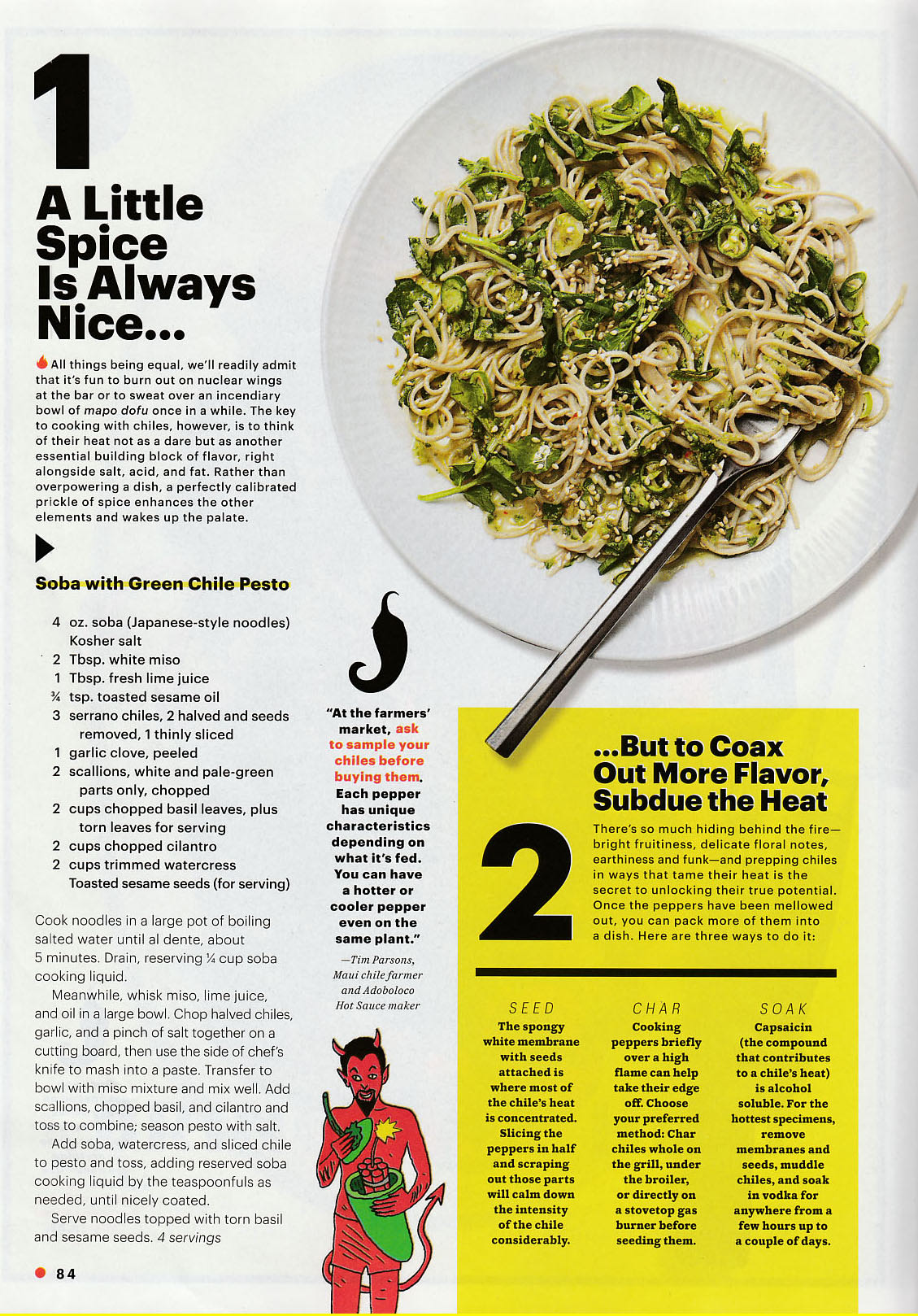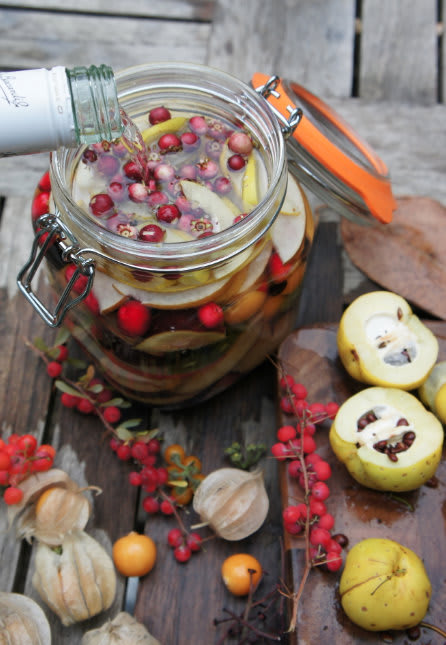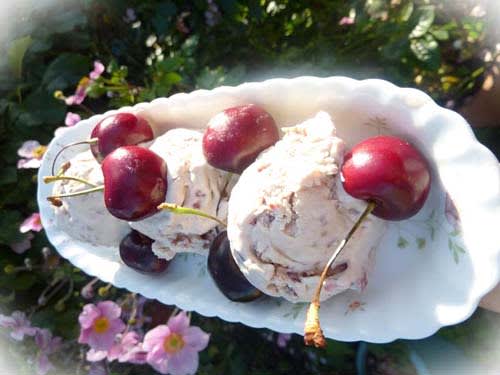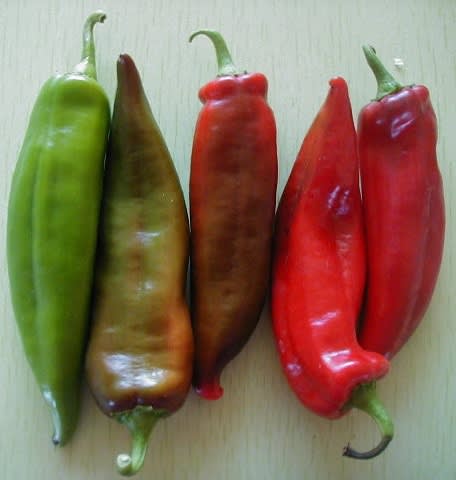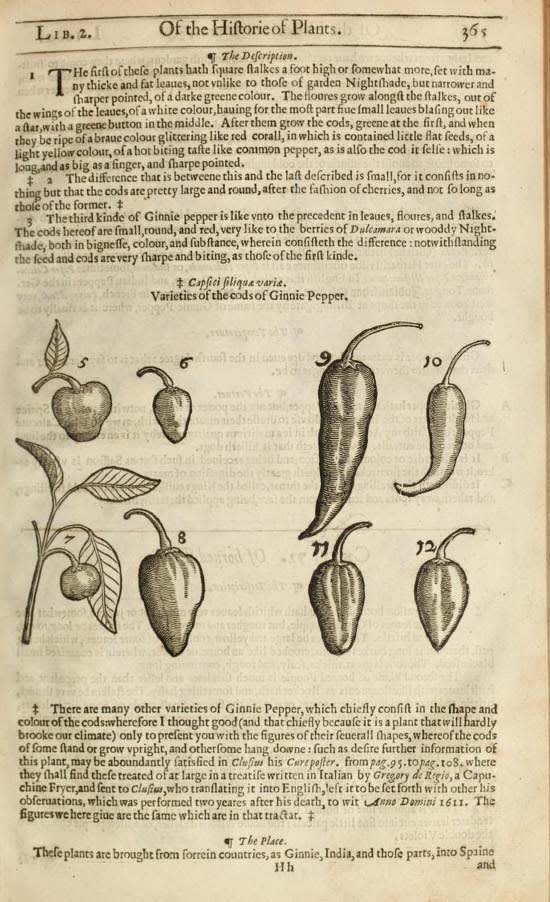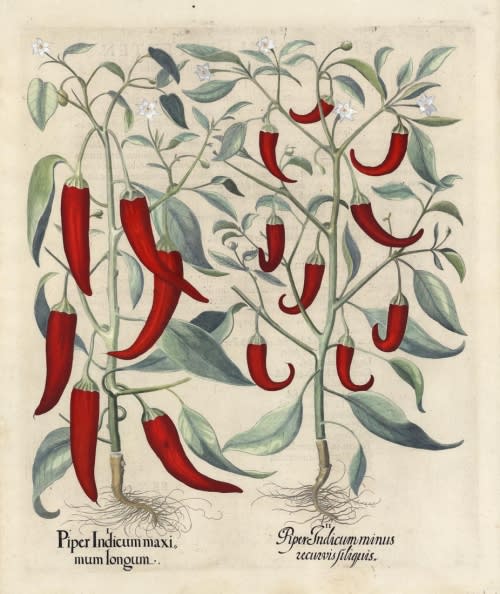Marzipan
マジパンはアーモンドと砂糖を一緒に挽きつぶした保存のきく糖菓生地で、市販のものもありますが手作りすると驚くほどおいしいものです。どのような方法で作ればよいのか、どの国にどのようなレシピがあるのか調べてみました。
OEDはマジパンを次のように説明しています。
『1400年代後期イギリスでは “マジパン”を ( marchpane ) と表記していましたが、これはアラブの影響を受けたイタリア語 ( marzapane ) に由来します。“marchpan” と綴るのはドイツの “ Marzipa “ 、フランスの “ marcepane “ そして古くイギリスで使われていた “ おそらくイラン由来の言葉:March の pain bread “ という表現に影響されたからでしょう。1800年後期以降はドイツの “ marzipan “ が使われています。』
“マジパン” はアラブが起源です。スペインのトレド(Toledo)やラ・リオハ(La Rioja)、シチリアのパレルモ( Palermo ) の名物であることからもそのことが理解できます。ヨーロッパではドイツが ”マジパン” の地位を築き上げたようです。リューベック(Lübeck)がよく知られています。スペイン経由でヨーロッパに入ったマジパンはハンザで栄えるドイツに入り、後にビートから取り出した砂糖を基に様々な使われ方が考え出されました。そこでドイツのWikipedia :
https://de.wikipedia.org/wiki/Marzipan からMarzipanの情報を得ることから始めました。
マジパンには砂糖とアーモンドを挽く工程とそれをローストして水分量を減らす工程がある。
1.アーモンドを洗い、熱湯(98℃)で茹でてラバーのローラーで皮を剥く。
2. アーモンドを荒挽きし、砂糖と混ぜてから油が出ないように細かい陶製のローラーで挽く。
3.90-95℃で開放してローストする。( 最近は105℃で、閉鎖方式でローストしている。)
4.無菌状態で冷まして真空パックする。
ロースト時に生じるキャラメル,ローズウオーターの添加等は企業間で異なり、次のような規格でマジパンは作られている。
- ニーダエッガー( Niederegger Marzipan ) ; 100% marzipan (100/0).
- Lübeck marzipan ; 90% almond paste and a maximum of 10% added sugar (90/10).
- Gütemarzipan ; 80% almond paste and a maximum of 20% added sugar (80/20).
- Quality Marzipan ; 70% almond paste and 30% sugar (70/30).
- „Gewöhnliches ; 50% almond paste, for a maximum of 50% added sugar (50/50).
- Königsberger Marzipan; 茶褐色の色をしてローズウオーターが入っている。フォンダンを作るのに適している。
- トレドのスペイン産マジパン。
- イタリア産はPuglia とSicily がある。
そのほかに次がある。
• persipan is marzipan similar and is made of peach and apricot kernels. It is mainly used as a filling for baked products, but not in chocolates. An exception are the dominoes mostly available during the Christmas season.
• Green marzipan is made with 4 to 8% pistachios. For example, this raw material is processed in Mozart balls.
• Resipan was produced in the GDR persipan in which corn grits with sugar and flavoring, and later because of bottlenecks in the corn and potato flour with sugar and flavoring processed for Nakapan because shortages of raw materials.
• Legupan was in the GDR a marzipan substitute made from mashed peas and sugar. Legupan had a greenish color.
• Calisson: confectionary from Provence in the form of a Weberschiffchens, with almonds and candied melon and oranges
• Halva (Helva or): From Sesame seeds
• Nougat: Instead of almonds are roasted nuts, hazelnuts mostly used
• turrón Xixona: Spanish Related of marzipan and nougat (not to be confused with the turrón Alicante). They are made of almond paste, sugar and other ingredients such as honey, egg white or lemon peel.
• Grisons Peach Stones, a specialty of the town of Chur
ドイツのレシピ http://www.cooknsoul.de/rezepte/basics/marzipan/ から、
材料;
アーモンド 300g
粉糖 300g
ローズウオーター 30ml
アーモンドをボールに入れてボイルした湯を注ぎ、5-10分間漬す。水を捨てて指で皮を剥き、2分間乾燥させる。フードプロセッサーに入れて油が出るまで2分間回す。粉糖、ローズウオーターと一緒に弱火でひとかたまりになって粉糖が溶けるまで加熱する。ラップにくるみ、冷蔵庫で保管する。
材料;
湯がいたアーモンド 100g
砂糖 80g
ローズウオーター又は水 10g
ビターアーモンドエッセンス 5drops
アーモンドを湯がく
1. アーモンドをボールに入れてボイルしている湯をかける。2-3分間漬して皮を取る。一晩乾燥する。
2. 砂糖80gをワーキングボールに入れて5秒間パルスする。
3. アーモンドをワーキングボールに入れて10秒間パルスする。細かく挽く。
4. 砂糖、ビターアーモンドのフレイバー、水を加えて10秒間回す。
5. 取り出して練る。ラップにくるみ、冷蔵庫に保管する。
ドイツのサイト http://www.chefkoch.de/rezepte/2466791388654309/Marzipanrohmasse.html から、
Marzipanrohmasse
材料:
アーモンド 250g
粉糖 100g
ローズウオーター 40ml
アーモンドエッセンス -
アーモンドに熱湯を5分間注ぐ。皮を取って細かく刻む。フードプロセッサーでピュレにする。ローズウオーター、ビターアーモンドオイルを加える。細かくなったら粉糖と一緒に練る。冷蔵庫で保管する。粉糖の量をこれよりも少なくすることもできる。
ドイツのサイトhttp://www.backenmachtgluecklich.de/rezepte/marzipan-selbermachen-mit-puderzucker-honig-oder-suessstoff.html から、
蜂蜜を使った方法、
材料;
茹でて細かく挽いたアーモンド 100g
蜂蜜 50g
ローズウオーター 1ts
ビターアーモンドのオイル 5 drops
Zum Bewerten des Rezepts klicken
アーモンドと蜂蜜、ローズウオーターを混ぜて2-3分間練る。固めてラップに包み冷蔵庫で保管する。
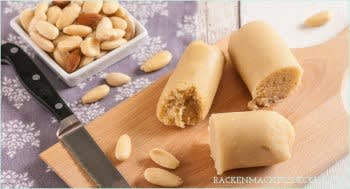
砂糖を使わない方法;
茹でて細かく挽いたアーモンド 100 g
natreen®人工甘味料 5TBS
ローズウオーター又は 10 g
ビターアーモンドオイル 5 drops
アーモンド、人工甘味料、オイル、ローズウオーターを2-3分間練る。ひとかたまりにしてラップにくるむ。冷蔵庫で保管する。
ここまで書かれると、マジパンはやはりドイツだなあと思ってしまうが、ほかの国も調べておかねばならないだろう。フランス、イギリス、アメリカのレシピを当たっておこう。
.,.,..,.,.,.,.,.,.,.,.,.,.,.,.,.,.,.,.,.,.,.,.,.,..,.,.,.,.,.,.,.,.,.,.,.,.,.,.,.,.,.,.,.,.,.,.,.,.,.,.,.,.,.,.,.,.,.,.,.,.,.,.,.,.,.,.,.,.,.,.
フランスの製法を4つ取り上げた。http://www.undejeunerdesoleil.com/2011/12/pate-damandes-maison-facile-4-methodes.html から、
クックしないで作る方法 ( Pâte d'amandes sans caisson )
卵白を使う方法 (conservation: one week in the refrigerator)
アーモンド(150℃ のオーブンで10分間乾燥させた) 100g
粉糖 100g
卵白 30g
オレンジフラワー又はローズフラワーあるいはアルコール 1ts
グルコースシロップを使う方法 (au sirop de glucose ; conservation: 2-3 weeks in the refrigerator, 装飾用 )
アーモンド(150℃ のオーブンで10分間乾燥させた) 100g
粉糖 100g
コーンシロップ 1tbs
オレンジフラワー又はローズあるいはアルコール 1ts
水を使う方法 (à l'eau ; retention: 1-2 weeks in the refrigerator )
アーモンド(150℃ のオーブンで10分間乾燥させた) 100g
粉糖 100g
水 20g
オレンジフラワー又はアルコール 10g
ビターアーモンドの香り 数滴
焼いて作る方法 (Pâte d'amandes cuite ;It keeps well covered several weeks in the fridge )
アーモンドと砂糖を混ぜ、卵白又はグルコース、あるいは水(オレンジフラワーウオーター又はアルコール)を加える。ドウを素早く混ぜて均一にする。粉糖を振ってラップで包む。
アーモンド(又は皮を剥いて少量のグラニュー糖を入れて湿気を与えて挽いたもの)150g
砂糖 200g
水(20-40gのグルコースシロップを入れたもの) 80-100g
砂糖を入れた水を116-118℃に熱し(約5分間)挽いたアーモンドを加えて弱火で鍋の底につくようになるまで加熱する。きれいな入れ物に入れて冷ます。粉糖で覆ってラップをする。
*.*.*.*.*.*.*.*.*.*.*.*.*.*.*.*.*.*.*.*.*.*.*.*.*.*.*.*.*.*.*.*.*.*.*.*.*.*.*.*.*.*.*.*.*.*.*.*.*.*.*.*.*.*.*.*.*.*.*.*.*
イギリスBBC http://www.bbcgoodfood.com/recipes/8164/easy-vanilla-marzipan から
材料;
ゴールデンキャスターシュガー 175g
粉糖 280g
挽いたアーモンド 450g
バニラ 1本
卵 2 個
オレンジ又はレモンジュース ½ tsp
方法、
砂糖とアーモンドをボールに入れてバニラを混ぜる。真ん中に卵とシトラスジュースを入れる。粉糖を振って素早く手短に練る。ボール状にまとめてラップをして冷蔵庫で保管する。2日目前に作っておくことができる。
*-*-*-*-*-*-*-*-*-*-*-*-*-*-*-*-*-*-*-*-*-*-*-*-*-*-*-*-*-*-*-*-*-*-*-*-*-*-*-*-*-*-*-*-*-*-**-*-*-*-*-*-*-*-*-
アメリカhttp://www.daringgourmet.com/2014/06/23/how-to-make-marzipan-almond-paste/ から、
材料;
アーモンドの粉 1½ cups
粉糖 1½ cups
アーモンドエッセンス 2 ts
ローズウオーター 1 ts
卵白 1個分 又はコーンシロップ 2 TBS
方法;
アーモンドと粉糖をフードプロセッサーに入れる。アーモンドエッセンス、ローズウオーターを入れて混ぜる。卵白を入れてひと固まりにする。水分が多いようだと粉糖を追加する。冷蔵庫に入れると固くなるので注意。2-3分間練る。ラップをして冷蔵庫で保存する。冷蔵庫で1ヶ月間、冷凍庫で6ヶ月間保存できる。約336gのマジパンができる。
^-^-^-^-^-^-^^-^-^-^-^-^-^-^-^-^-^-^-^-^-^-^-^-^-^-^-^-^-^-^-^-^-^-^-^-^-^-^-^^^-^-^-^-^-^-^-^
デンマーク http://www.kvalifood.com/recipes/homemade-marzipan から、

材料
アーモンド 300g
ビターアーモンド 1個
シロップ 60ml
シロップは次の砂糖と水で作る。
水 75ml
砂糖225g又は砂糖75gをグルコース又はデキストロースに代える
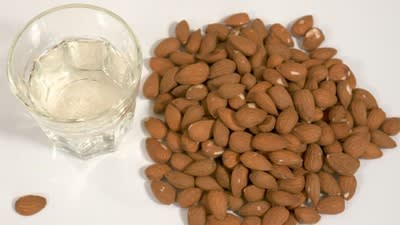
ビターアーモンドは割れ目を入れてから爪又はナイフで皮が簡単に剥けるまで12時間冷水につける。
途中で2回水を取り替え、常温で12時間ほど水につける。時間が長くなると苦みが消えるので気をつける。
シロップは砂糖と水をソースパンに入れて砂糖が溶けるまで火にかける。冷ましてからアーモンドを混ぜる。シロップを冷ましたまま放置して結晶化したら水を1ts入れて加熱するとよい。あるいは一部をデキストロース又はグルコースに代える。マジパンを焼き菓子に使うのであれば砂糖だけでよいがマジパンを生又はチョコレートで覆った菓子にする場合には75g(砂糖の20-30%)をグルコース又はデキストロースに置き換えると砂糖が結晶化しない。
アーモンドの粉;
ソースパンに水11/2L,を入れてボイルする。アーモンドを入れてボイルする。
火を消して約2分間漬しておく。皮が剥けるようになったら湯からすぐに出して香りが飛ぶのを防ぐ。すぐに冷水に入れて皮を剥く。タオルですぐに拭いて冷まして乾かす。ブレンダー又はコーヒーグラインダーで挽く。コーヒーブレンダーは回転速度があるのでよい。ビターアーモンドを一緒に挽く。シロップ60mlを加えて練る。ラップにくるんで保存する。冷蔵庫で約3週間もつ。
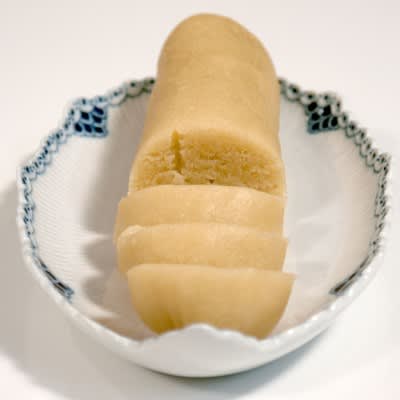
注. デンマークローマジパンには少なくともアーモンドが60%含まれていなくてはならない。残りは砂糖と水です。オンラインでは50/50のレシピがあるがこれは甘すぎる。
カリフォルニアアーモンドは値段も手頃だが苦みがなく、スペインのヴァレンシアアーモンドは当たり外れが大きくまるでロシアンルーレットのようだ。アーモンドは1年を過ぎたものは酸化して油臭い。ビターアーモンドは皮を剥き冷水に12-36時間漬して苦みを取り除く必要がある。
マジパンに卵白を入れることは滅多にないが、ノルウエイやアメリカなどいくつかの国で行われている。悪くはないがデンマークではやらない。ケーキやペイストリィを焼いたりするときには一部分のレシピで我々も使う。
よく乾燥した皮付きのアーモンドは挽くとオイルが出る。ピーナッツバターのように伸びてとてもマジパンにはならない。皮を剥く時は少なくとも12時間水に漬してオイルが出ないようにせねばならない。
アーモンドをボイルしてから皮を剥き、オーブンで乾燥させるように書いているレシピが多いが間違った考えである。アーモンドは加熱すればするほどアーモンドの香りが飛んでしまう。加熱しすぎると香りの少ない水っぽいアーモンドになってしまう。できるだけ加熱しないことがよい味を生む。皮を剥く際は長い間湯の中に入れてボイルしないことです。オーブンに入れて乾燥すると乾燥しすぎてアーモンドからオイルが出ることになる。粉にする時に焼くのは間違っている。仮に180℃で8-12分間ローストしたとしても、これはピーナッツバターの味がしてサラダにしか使えない。
ほとんどのレシピではアーモンド300gに対してビターアーモンドを3-6粒入れるように言っているが、これは多すぎる。Odense marzipanでは360gに対して3粒であり、水に漬していないのでかなり苦い。
1/8乃至それよりも小さな量ははかりにくいので1つとしたがその場合は室温に置いた水の中に漬して使ってほしい。
ビターアーモンドをほかのアーモンドと一緒にボイルしてはならない。苦みが消えるしオーブンでローストするよりも悪い結果を生む。
<><><><><><><><><><><><><><><><><><><><><><><><><><
ここまで書けば、スペインのレシピにも触れないわけにはいかないのですが、あまり気乗りしません。それというのもスペインはマジパンそのものの製法には目をくれず(我々からみれば)気楽にマジパンを作りそれを縦横に使っているからです。特に我々日本人にとっては近寄りがたい、もっとマジパンについて知ったうえでないと見てはならないレシピが数多く存在するからです。マジパン文化が我々のはるか先を行っているとも言えます。とは言っても一つくらいは取りあげないといけないでしょうね。
スペインのサイト http://www.cookmonkeys.com/mazapan-base-para-panellets から
材料
砂糖 750g
卵白 6個
アーモンドパウダー 750g
1. 砂糖、アーモンド卵白を混ぜる。よく練って3つに分ける。
2. 約500gの円筒形が3つできる。
*。*。*。*。*。*。*。*。*。*。*。*。*。*。*。*。*。*。*。*。*。*。*。*。*。*。*。*。*。*。*。*。*。*。*。*。*。*。*
次回は手作りしたマジパンでドイツのローズケーキ ; Rosenkuchen を作ってみようと思います。お楽しみに!!











